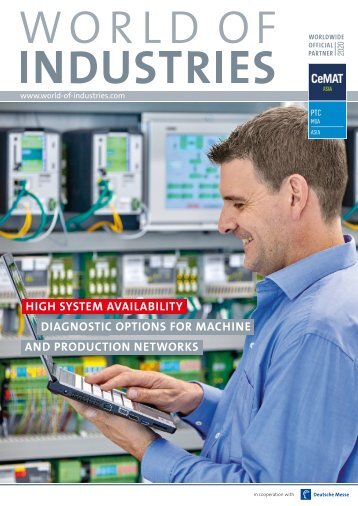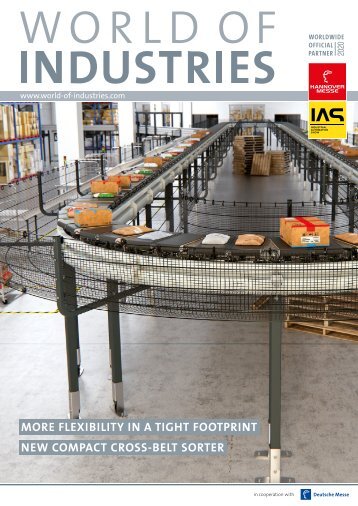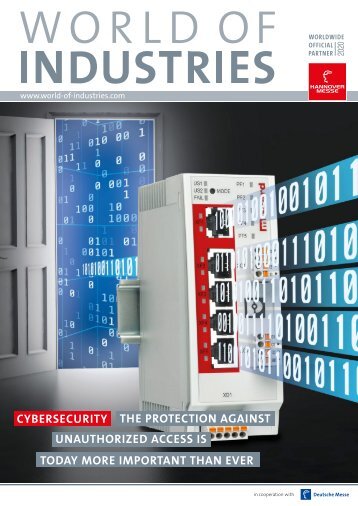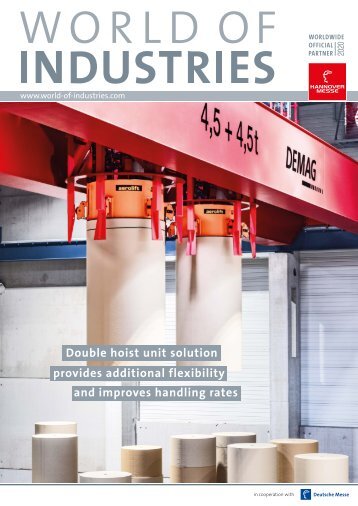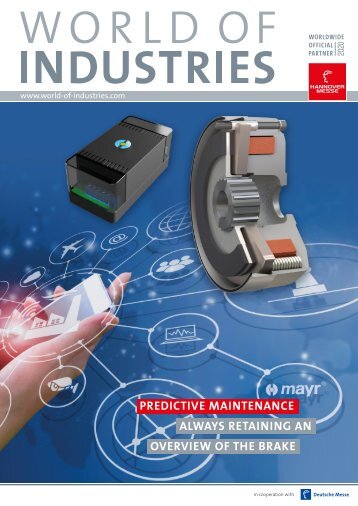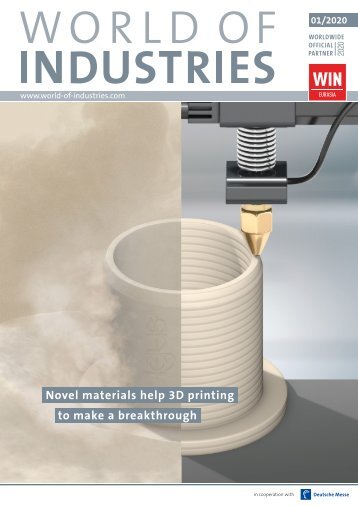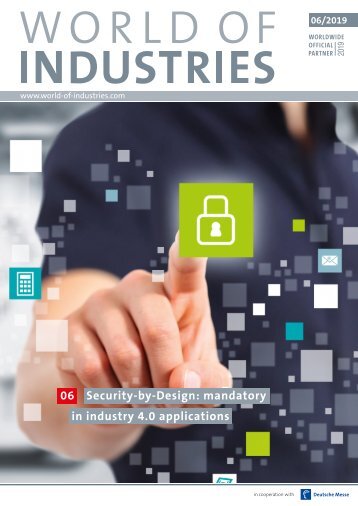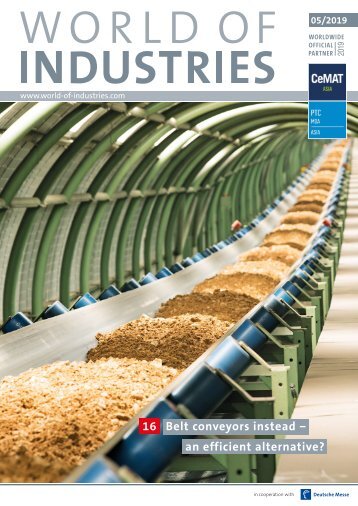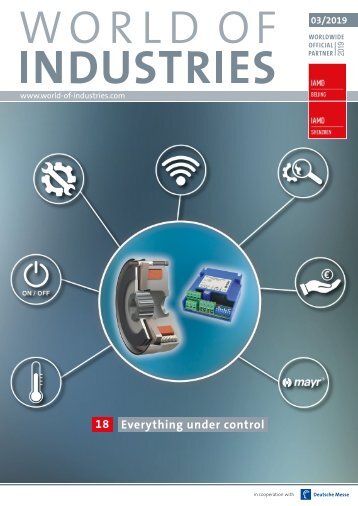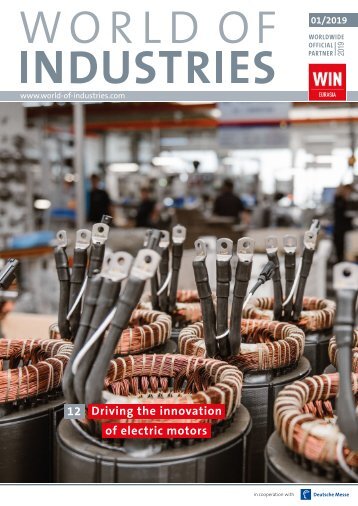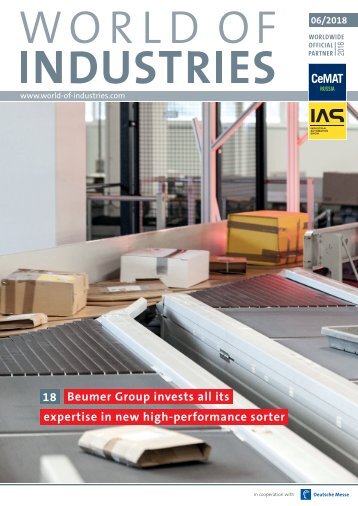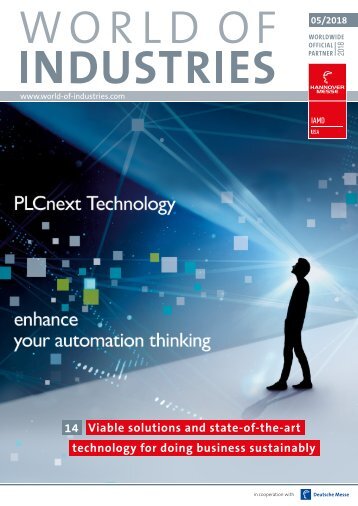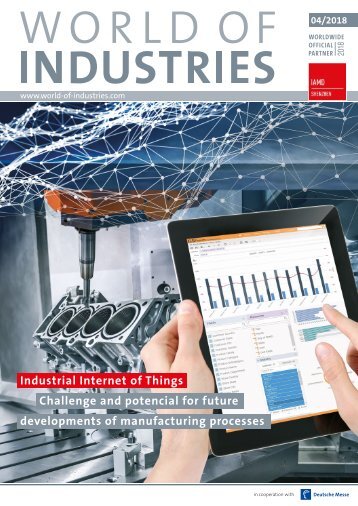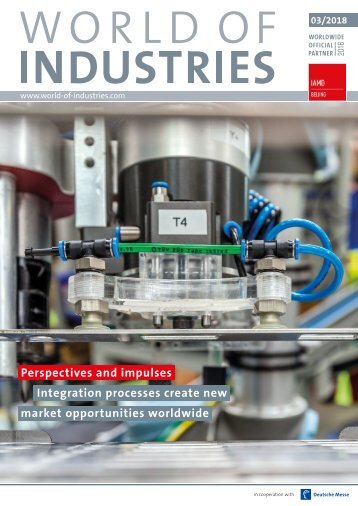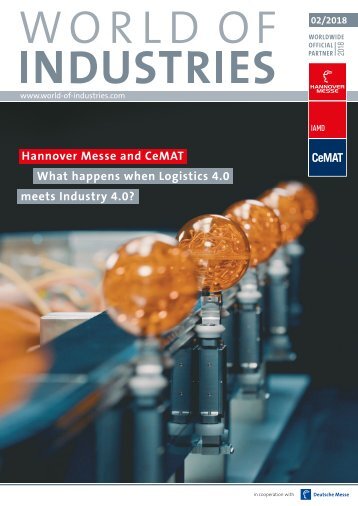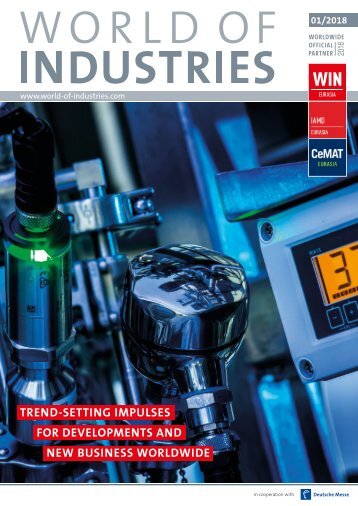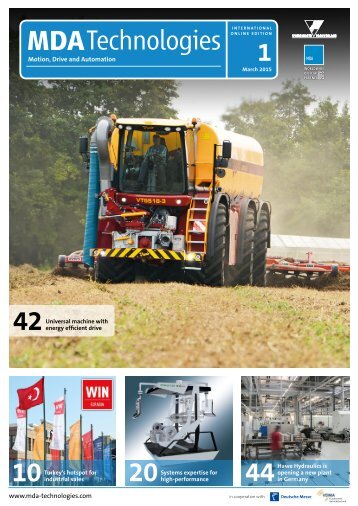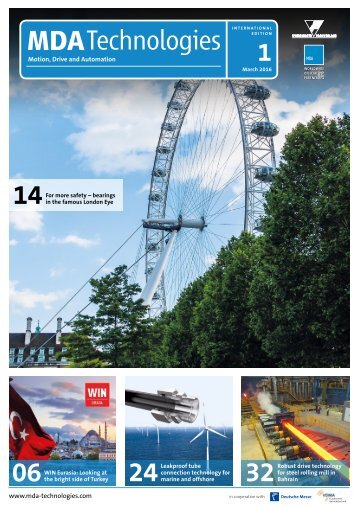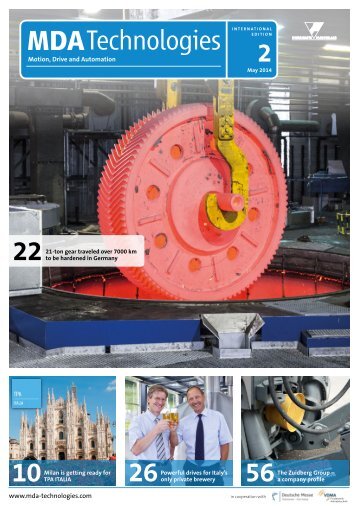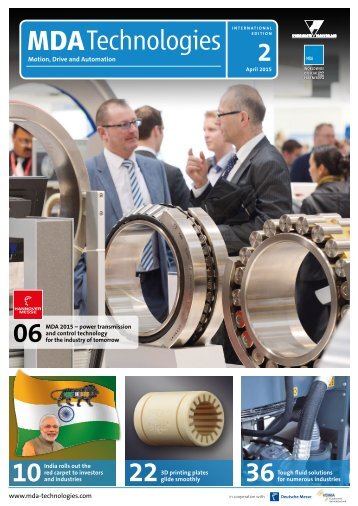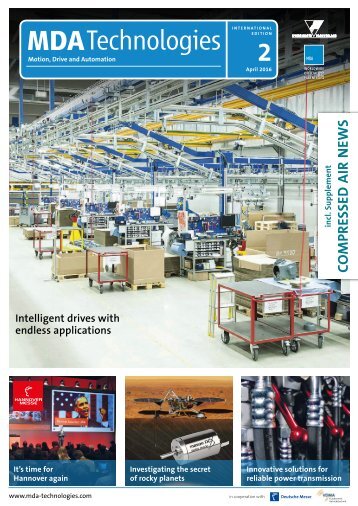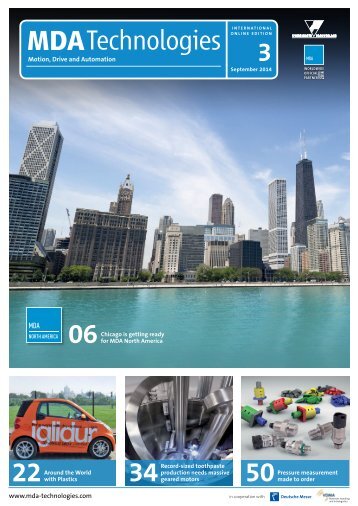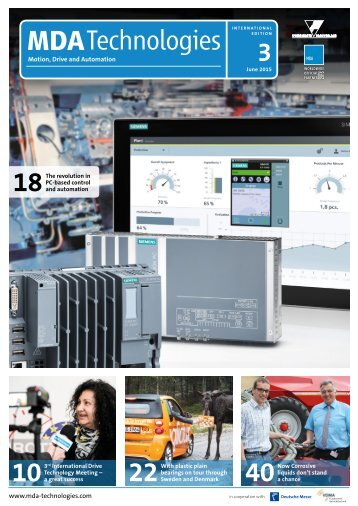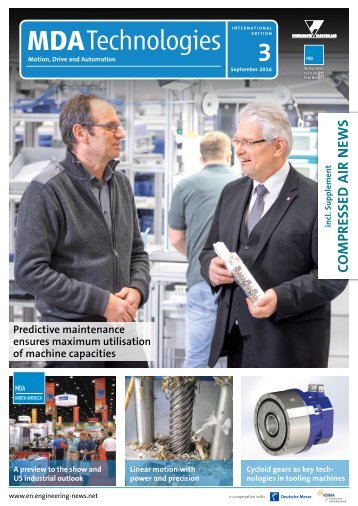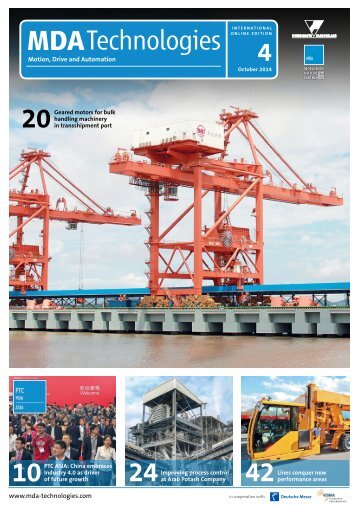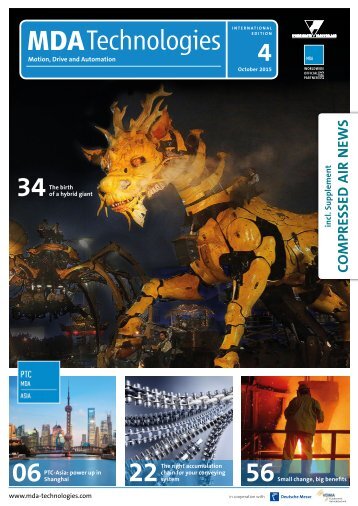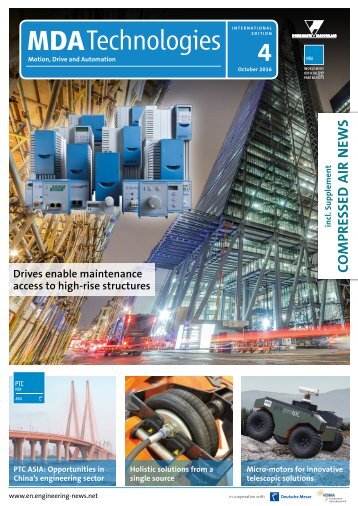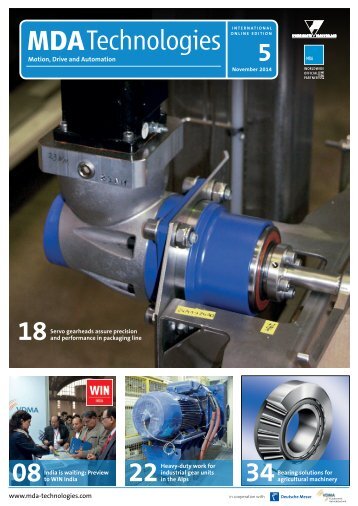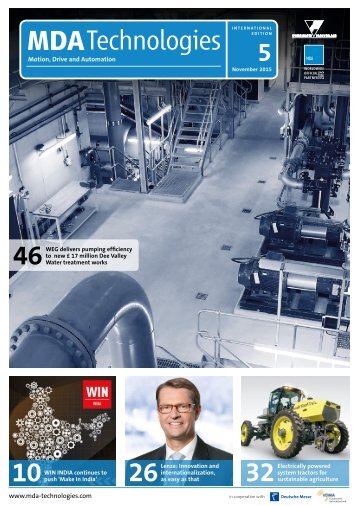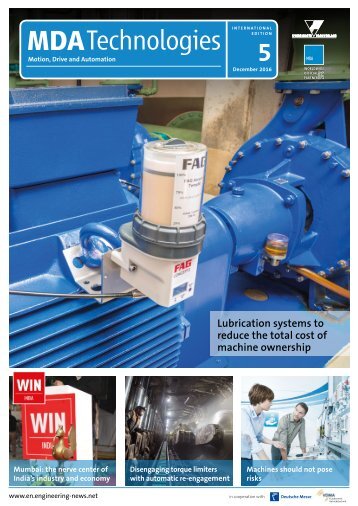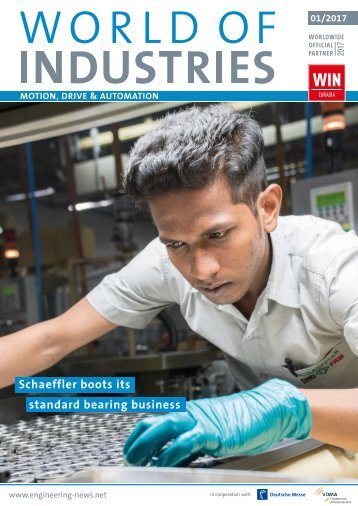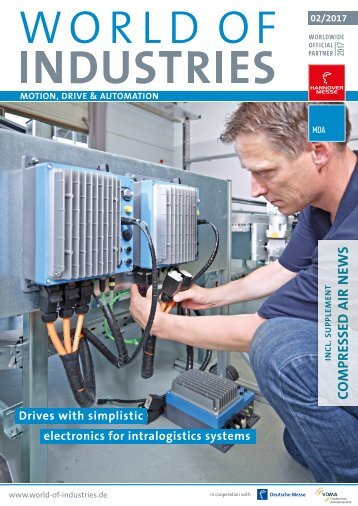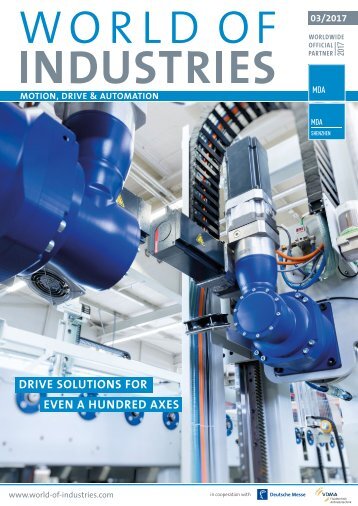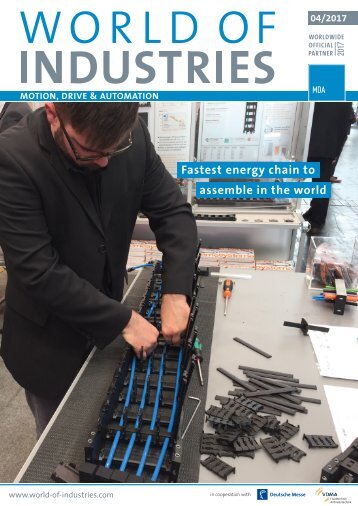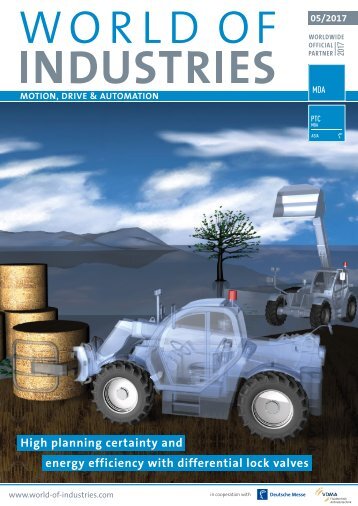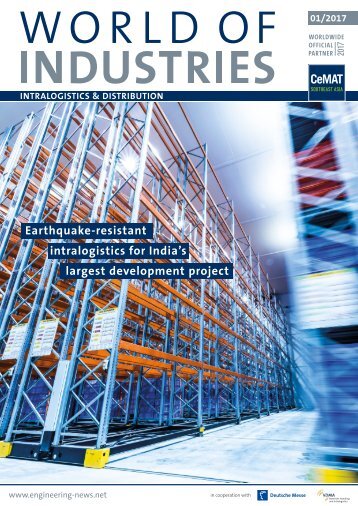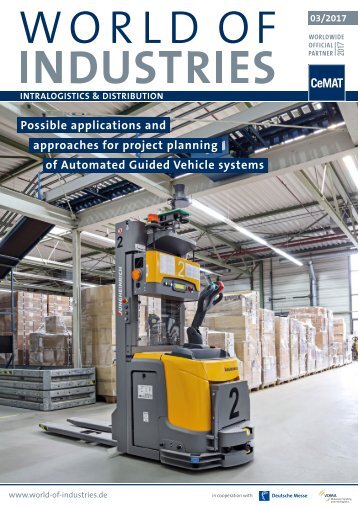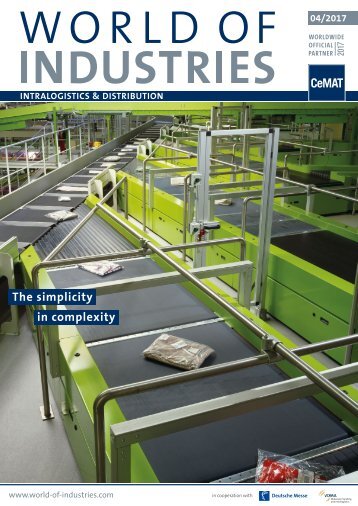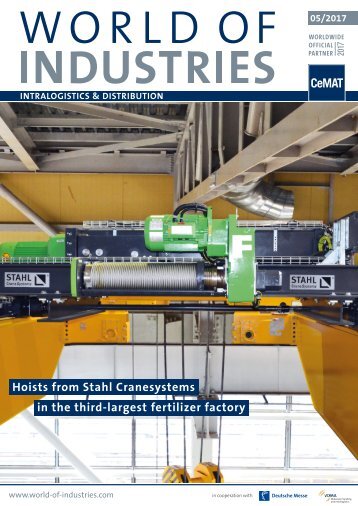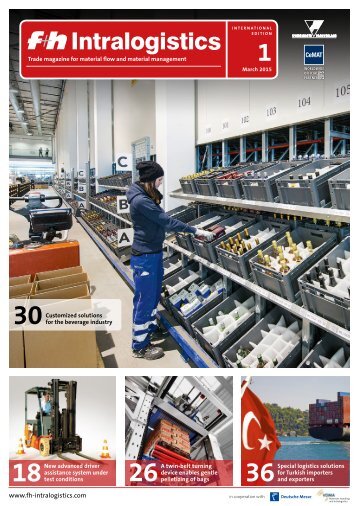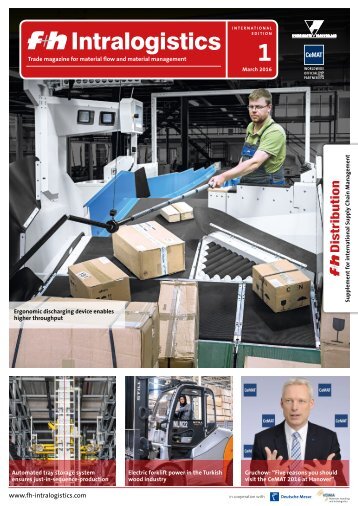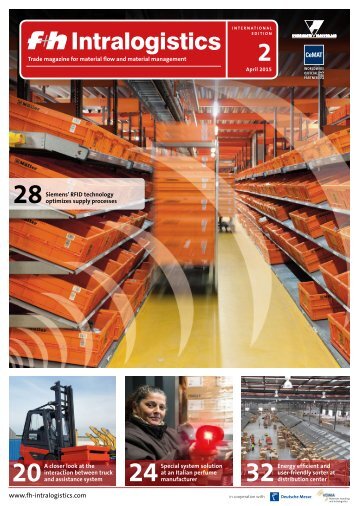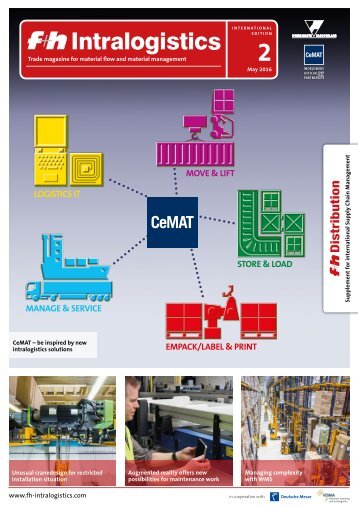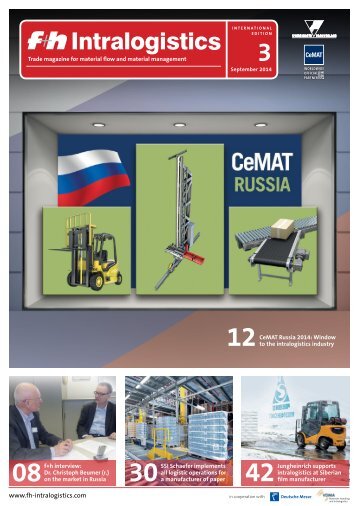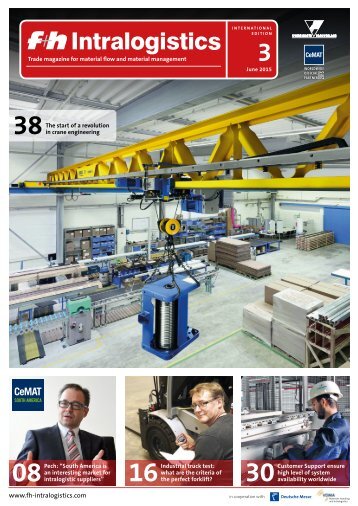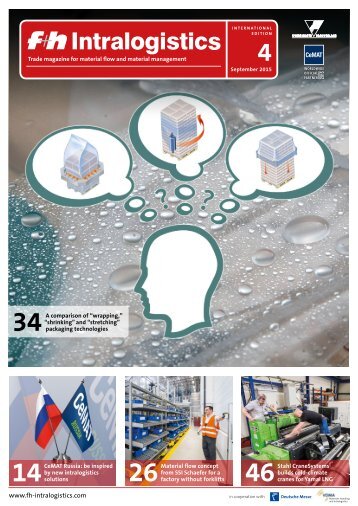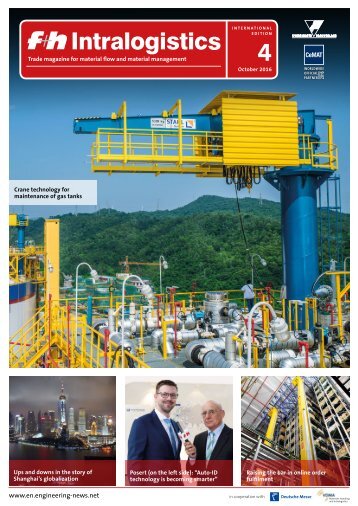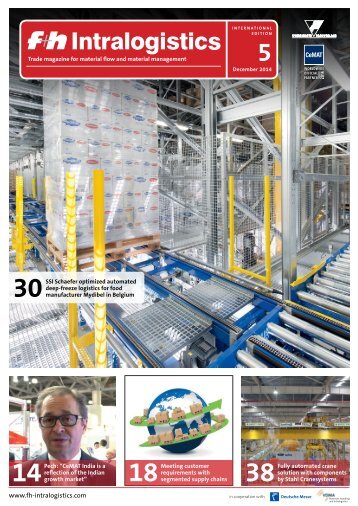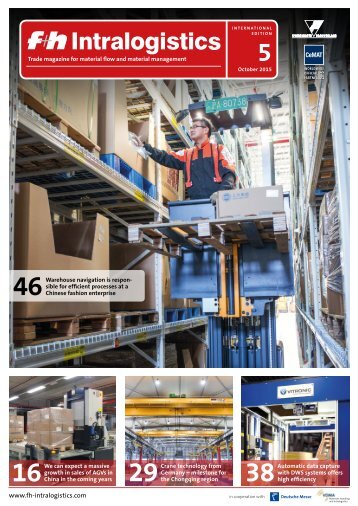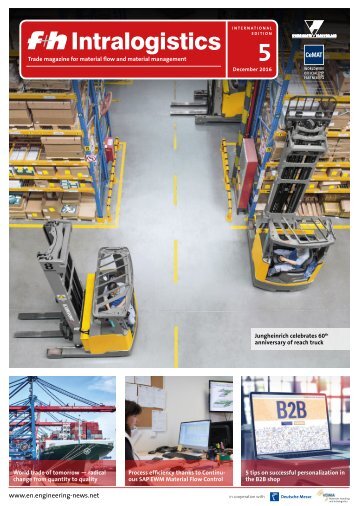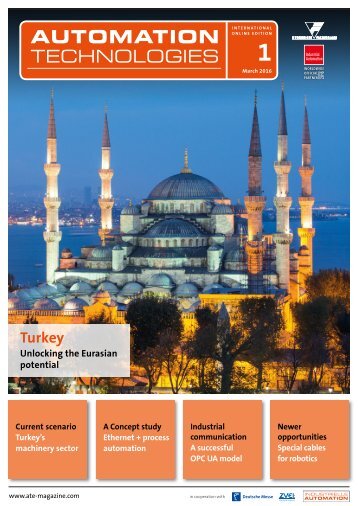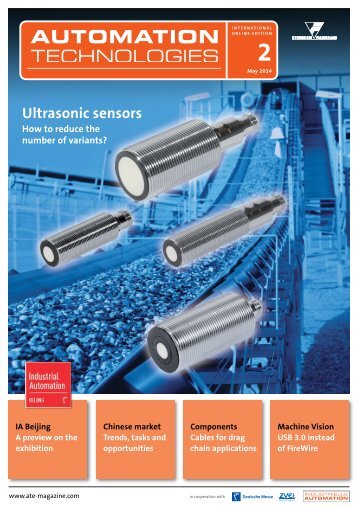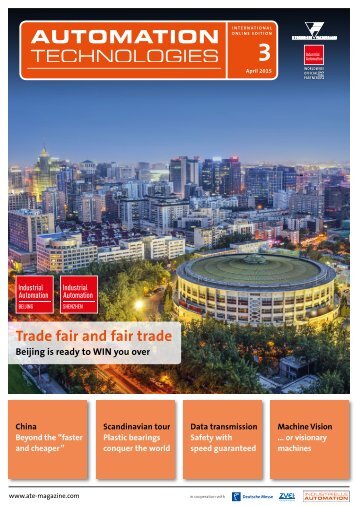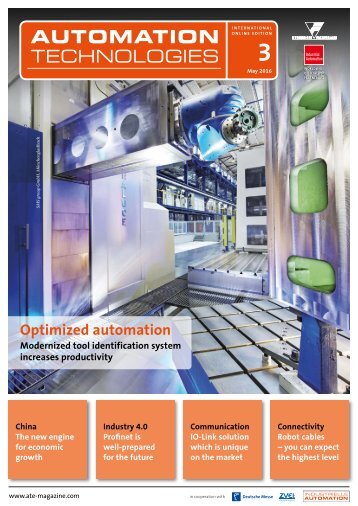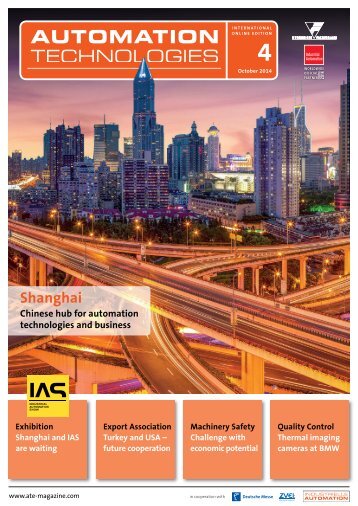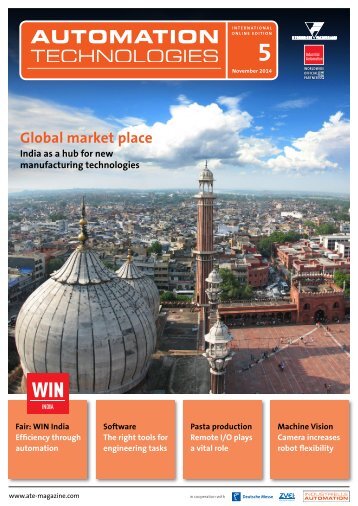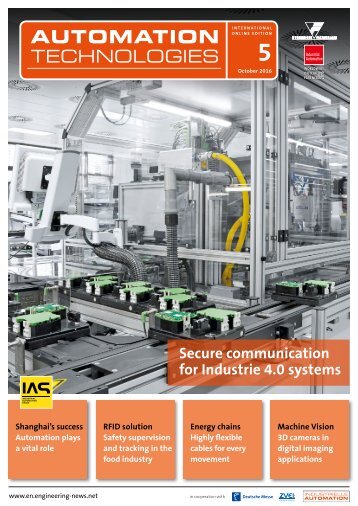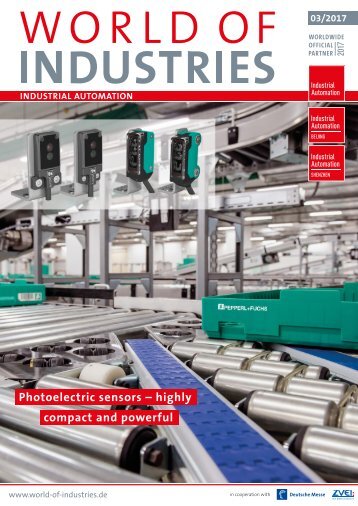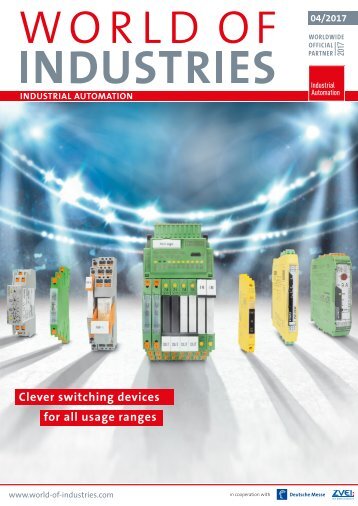Automation Technologies 5/2014
- Text
- Automation
- Technologies
Sensors and Measurement
Sensors and Measurement Sensors for any circumstance Johann Salzberger, Valentina Nikiforova Modern production processes are becoming increasingly complex and high speed. Low raw material input should contribute to resource and energy conservation. In order to meet the needs of machine building and automation tasks, sensors are becoming smaller and smarter, while also gaining integration capabilities. closer look at the non-contact measurement A techniques for distance, displacement, position and dimensions shows that all sensors can be divided into two groups based on their physical principle: electromagnetic and optical devices. The electromagnetic sensors, e.g. eddy current or capacitive sensors, detect the distance to the electrically-conductive measurement object based on changes in the electrical field. Eddy current sensors measure the distance via the change in impedance of the sensor coil. However, in the capacitive measuring principle, the sensor and measurement object form the plates of an ideal capacitor. Both principles measure in the submicrometer range. Nevertheless, they differ considerably with respect to the operating environment. While eddy current sensors are ideally suited to harsh industrial environments (e.g. dirt, dust, humidity), capacitive sensors require clean surroundings. These sensors can be applied in electronics production, as well as in the laboratory and clean rooms. Unlimited scope in design and shape Cable, sensor size and individual measuring ranges of the standard sensors can be adapted to meet customer-specific applications. Particularly beneficial are sensors with integrated electronics that have a miniature, compact housing or special sensor sizes. The Embedded Coil Technology (ECT) is used for miniaturization in terms of customization. This production technique allows almost unlimited scope in terms of the external design and geometrical shape of the sensors. The entire evaluation electronics is integrable into the sensor. With an eddy current sensor, a two-dimensional coil is embedded in an inorganic material. This material technology improves the sensors in terms of their stability and robustness. The ECT technique also increases their thermal resistance. ECT sensors are suitable for extremely harsh applications such as ultra-high vacuums in semiconductor production. Unlike electromagnetic techniques, optical metrology uses the effects of optics. Advantages of these techniques are the small measuring point and a relatively large offset distance. Laser triangulation, for example, uses the three-point relationship between the laser diode in the sensor, the target object, and the photo-elements in the sensor. The sensors are offered in a wide range of performance classes to suit a variety of applications. These smart sensors are equipped Author: Johann Salzberger, Managing Director Marketing and Sales at Micro-Epsilon in Ortenburg, Germany Valentina Nikiforova, Technical Editor at Micro-Epsilon in Ortenburg, Germany AUTOMATION TECHNOLOGIES 5/2014
Sensors and Measurement with an integrated controller, enabling the sensor itself to perform evaluation tasks. Even the type of technology can be selected depending on the respective measurement object and the corresponding task. Point sensors measure the distance to standard objects. Sensors that use a short laser line are applied on metallic surfaces and laser scanners with a long laser line can detect multi-dimensional profiles of objects. Furthermore, either a red (all-rounder) or a blue laser diode (applied with red-hot glowing metals and organic objects) can be selected to suit the application. Laser sensors are often used in highly automated production lines, e.g. in automotive manufacturing. Ethernet as an industrial language In order to simplify their integration into processes, laser sensors are equipped with a variety of interfaces. As well as analogue outputs, digital interfaces such as Ethernet are also available. The Ethernet protocol uses integrated collision detection of data packets and guarantees complete, faultless transfer of data. This open connectivity protocol enables almost unlimited communication flow within networks independently of the operating system of the terminal device and the hardware. Wiring effort is minimal. The user can address the controller from anywhere via an IP address, and can evaluate the measured data location independently and perform maintenance tasks remotely from anywhere in the world. Operation and configuration take place in a standard web browser, i.e. there is no need to install any additional software. Fast data rates of up to 10 GBit/s are equally impressive. These factors support perfect data transfer and “physical” integration of Ethernet-capable components into the system. The standard components used are mass-produced, making them particularly low cost. Their reasonable price has contributed to the widespread adoption of Ethernet in automation and machine building. Other optical sensors such as confocal-chromatic measurement systems offer Ethernet/EtherCAT interfaces (real time Ethernet) as well as the analogue outputs. With the confocal chromatic measuring principle, white light is split into different color spectra and focused onto an object through a multi-lens optical system. The sensors produce highly accurate results for distance and displacement measurement, and also for measuring the thickness of transparent multilayer objects (e.g. flat screens). The user benefits from a tiny measurement spot and nanometer-resolution. In terms of measurement speed, the fastest controller in the world today achieves measurement rates of 10 kHz using an LED light source and 70 kHz using a Xenon light source. This is why confocal sensors are used, for example, in the quality control of high tech production lines of premium electronics manufacturers. Electromagnetic eddy current and capacitive sensors are also equipped with Ethernet interfaces. Individual sensors and systems Micro-Epsilon has been a producer of sensors and measurement systems for more than 45 years. Starting as a one-man business, the company has grown into a highly specialized global business. The networked competence centers within the group offer a wide range and depth of development and production expertise, with the flexibility to develop and manufacture tailor-made solutions, providing users with economical and technical advantages over competitor products. The entire solution is delivered from one source, starting from application consulting through to conception and product development, as well as production and after-sales service. Customers benefit from a reliable partnership between manufacturer and user, as well as technical support that is focused on stability and efficiency improvements. www.micro-epsilon.de Company name: Micro-Epsilon Established: 1968 Headquarters: Ortenburg, Germany Turnover: € 110 m (2013) Employees: more than 600 Products: sensors, measurement systems Confocal chromatic sensors are applied in the quality control of electronics productions About
- Page 1:
international ONLINE Edition 5 Nove
- Page 4 and 5:
COLOMBIA SLOVAKIA table of content
- Page 6 and 7:
News and Markets Enabling Indian ma
- Page 8 and 9:
News and Markets IST AG: 20 years i
- Page 10 and 11:
News and Markets European Imaging A
- Page 12 and 13:
News news and markets big our pictu
- Page 14 and 15:
AUTOMATION TECHNOLOGIES Ten-point-p
- Page 16 and 17:
AUTOMATION TECHNOLOGIES India is wa
- Page 18 and 19:
News and Markets What do you expect
- Page 20 and 21:
News and markets India goes Hanover
- Page 22 and 23:
news and markets UNTAPPED POTENTIAL
- Page 24 and 25:
AUTOMATION TECHNOLOGIES Find the so
- Page 26 and 27:
AUTOMATION TECHNOLOGIES Quality con
- Page 28 and 29:
AUTOMATION TECHNOLOGIES Quo vadis p
- Page 30 and 31: AUTOMATION TECHNOLOGIES Waste recyc
- Page 32 and 33: AUTOMATION TECHNOLOGIES Sensors for
- Page 34 and 35: AUTOMATION TECHNOLOGIES Shortened e
- Page 36 and 37: AUTOMATION TECHNOLOGIES Robot world
- Page 38 and 39: AUTOMATION TECHNOLOGIES I/O system
- Page 40 and 41: AUTOMATION TECHNOLOGIES Remote I/O
- Page 42 and 43: AUTOMATION TECHNOLOGIES Profinet is
- Page 44 and 45: AUTOMATION TECHNOLOGIES Quality che
- Page 46: Components and Software Separable c
- Page 49 and 50: ead article AUTOMATION TECHNOLOGIES
- Page 51 and 52: AUTOMATION TECHNOLOGIES video benef
- Page 53 and 54: video Syndy at work read article
- Page 55 and 56: AUTOMATION TECHNOLOGIES read articl
- Page 57 and 58: News and markets Compact and cost-e
- Page 59 and 60: Editorial Using international coope
- Page 61 and 62: news and markets this does not refe
- Page 63 and 64: WIN India: “A preview of Hannover
- Page 65 and 66: sensors and Measurement It can be h
- Page 67 and 68: sensors and Measurement next page 0
- Page 69 and 70: sensors and Measurement Make inform
- Page 71 and 72: Sensors and Measurement next page t
- Page 73 and 74: Reach international markets. New bu
- Page 75 and 76: Sensors and Measurement next page P
- Page 77 and 78: Sensors and Measurement Electronic
- Page 79: Sensors and Measurement 02 The ligh
- Page 83 and 84: Control and drive technology next p
- Page 85 and 86: Control and drive technology Interv
- Page 87 and 88: Company name: Maxon Motor Establish
- Page 89 and 90: mined that the bag room facility sh
- Page 91 and 92: industrial communication next page
- Page 93 and 94: Get engineering news. Inspiration i
- Page 95 and 96: Industrial Communication next page
- Page 97 and 98: Get engineering news. Inspiration i
- Page 99 and 100: Industrial Communication Bürkert a
- Page 101 and 102: Components and software Company nam
- Page 103 and 104: Components and Software next page n
- Page 105 and 106: Components and Software high therma
- Page 107 and 108: Machine Vision On the wiring head a
- Page 109 and 110: Machine Vision next page with irreg
- Page 111: Reach international markets. New bu
Inappropriate
Loading...
Mail this publication
Loading...
Embed
Loading...

